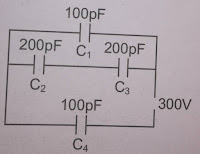Note Making
Note Making
Whenever you read or try to learn while you study you make notes out of it so that you can read or have a review of it whenever you like . It is very quick as notes help you to have review at one sight .
Not only while doing self studies , you also make notes in class while the teacher is teaching a topic .
Format
Format
Example :
Childhood fears
1. Childhood
1.1 A period of happiness
1.2 A period of memorable experiences
1.3 A period of terrifying moments
2. Two diffn kinds of fears
2.1 Fear of getting lost
2.2 Fear of darkness
2.3 Fear of not being accpt by others
3. Evoln from child to adult
3.1 Enables to recognize fears
3.2 Helps to overcome fears
3.3 Helps to understand the impt of friendliness and sincerity
The other writing skills :
Note Making
It is a reading skill which involves identifying the main idea , the underlined idea and supporting idea .
Format
How to write note and the format note making includes:
- Title - It shows the main idea of the full comprehension whose notes are to be made . The title should always be according to the theme of the comprehension given . For e.g. - the comprehension is about childhood memories so your title can be " Childhood" .
- Headings - These are the headings of the various paras which you think are important for your notes like childhood memories comprehension contains paras related to memories at the age of 5 or memories of summer holidays so the heading would be " Summer Memories " .
- Sub - Heading - It is the sub topic of the main Heading which you have given . It is just like the sub part of various main headings . For e.g. - if the summer memories contains information about Trip to Manili , Visit with Grandma to the Farmhouse so your sub headings would be " Trip to Manili " and " Visit with Grandma to the Farmhouse " .
- Sub sub Heading - It is the sub sub topic of the main heading . It usually covers the important point in your sub topic. Sub sub heading according to previous e.g. would contain the sub topics in Trip to Manili and Visit with Grandma to the Farmhouse like the events described in Trip to Manili would be visiting the airport from Delhi to Manili , taking the rooms at the hotel so the sub subheadings would be " Visiting the airport from Delhi to Manili , Taking the rooms at the hotel " .
- Key - It covers the words which you have shortened up according to you . While writing the key you have to write the shortened up forms along with their full versions . For e.g. - " expd - expenditure ".
- Summary - Summary is the short note on the notes which you have made . It should written in your own language . The best way to write a summary is to first write the notes and then without seeing the actual comprehension write summary according to your notes only . Summary should never be more than the given word limit .
Format
Title
1.Heading 1
1.1 Sub - Heading
1.1.1 Sub sub - Heading
1.2
1.3
2.Heading 2
2.1 Sub - Heading
2.1.1 Sub sub - Heading
Points to remember
You should not forget any of the points while you write the note . This will enhance your note making writing skill .
- All the important ideas , supporting ideas and specific information should be covered .
- Unnecessary information should be left out.
- Notes are much shorter than original text .
- A suitable title is to be given to the passage .
- The main points and the supporting details should be clearly distinguished .
- Information is condensed using abbreviations , symbol , numbers etc.
- Condensed information, main points , supporting ideas ,sub - heads are organised in a systematic manner .
- Provide a key to the abbreviations used .
- Same title should be given in summary also .
- Write a summary in 80 words . Summary should be based on notes . Do not refer the passage .
- Summary is written using complete grammatically correct sentences . No abbreviations are to be used in Summary .
- Everything is left aligned and box of the key can be made in the middle of the page .
Childhood fears
1. Childhood
1.1 A period of happiness
1.2 A period of memorable experiences
1.3 A period of terrifying moments
2. Two diffn kinds of fears
2.1 Fear of getting lost
2.2 Fear of darkness
2.3 Fear of not being accpt by others
3. Evoln from child to adult
3.1 Enables to recognize fears
3.2 Helps to overcome fears
3.3 Helps to understand the impt of friendliness and sincerity
Summary
Childhood , generally is a period of happiness and of the most memorable and carefree time of a person's life . But it is also a time when children including the writer was a child and had some fears which caused uncomfortable moments . In his childhood the writer was scared of darkness and any sort of sound would make him shudder and feel helpless . Another childhood fear was the fear of getting lost and so he would never get lost . The worst fear was the fear of not being liked or accepted by others. The journey from childhood to adulthood teaches us to recognize and overcome fears . One realises that friendliness and sincerity encourage people to like others.
The other writing skills :
- Notice Writing : It includes format with examples
- Complaint Letter












AWS Training Institute In Noida
ReplyDelete